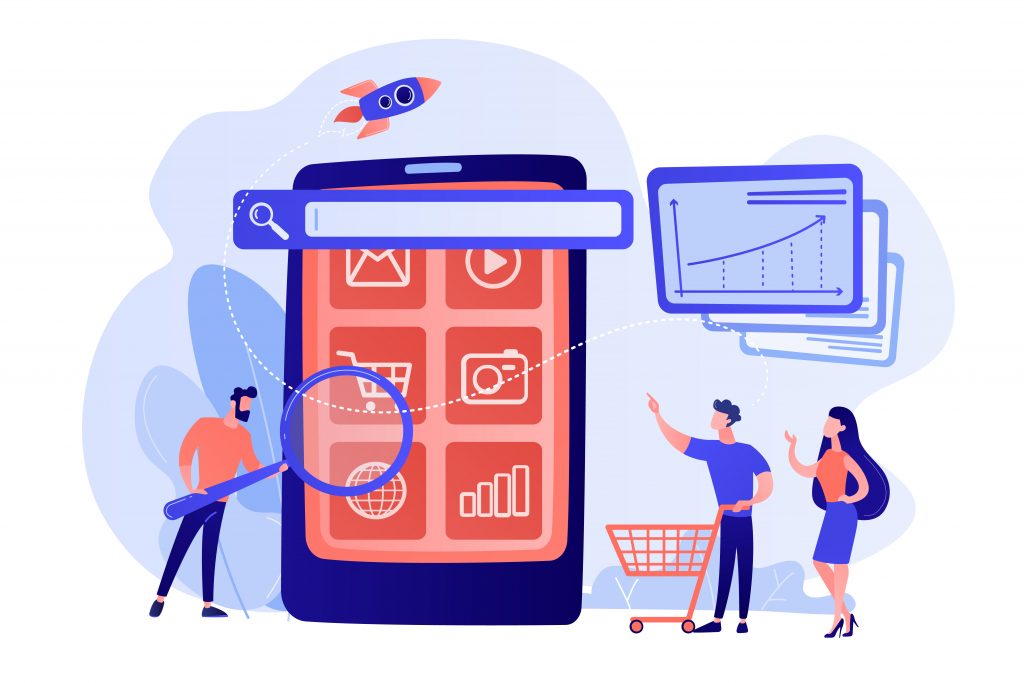From Concept to Creation – Journey of a Successful BigCommerce App Development
Last Updated | January 19, 2024
Table of Contents
A successful BigCommerce app demands creativity, strategic planning, and proper execution. In the process of concept to creation, every step plays a crucial role. Every aspect of an app has the potential to meet the needs of users.
Thus, understanding every step is equally significant to lead the process. But what does it take to develop a successful BigCommerce app? Let’s take a journey through the different phases of BigCommerce app development and understand the process from concept to creation.
In this blog post, you will explore the key stages of BigCommerce app development and how it can benefit you at each level.
Read Also: Top 10 BigCommerce Marketplace Apps For Transforming Your E-Commerce Store
Step-by-Step BigCommerce App Development Process
Step 1: Understanding the Purpose
The journey starts with clearly identifying the purpose of the BigCommerce app. The aim could be anything. Whether to improve the user experience, organize ecommerce processes, or act upon innovative features—the goal serves as the foundational step.
At this point, both developers and stakeholders collaborate effectively. They first recognize the target audience, examine market trends, and establish the unique selling points that will make the app unique.
Step 2: Planning and Design
After knowing the objective, it is time to thoroughly research market trends. This step is imperative in the competitive world of BigCommerce app development. The biggest reason is that these trends identify users’ pain points and help you learn about competitor apps. All this leads you to stay updated on industry trends.
Know that the user experience (UX) and user interface (UI) design contribute to the app’s success. Therefore, paying utmost attention is vital during this stage. Again, this is to ensure that every aspect supports the app’s intended purpose.
Step 3: Development
Guess where the actual development phase begins. It starts when the developer transforms the concept into a tangible BigCommerce app.
The development phase depends on several factors, such as app complexity, integration requirements, and testing standards. Therefore, it is vital to have an experienced team that can handle these tasks efficiently.
Experienced developers can leverage their skills to write clean code and integrate necessary APIs for smooth functionality. Regular testing collaboration and debugging are also integral parts of the development process to stay on track and address any challenges that may arise.
Step 4: Testing
Moving forward, thorough testing becomes crucial in a lot of instances. Specifically to identify and rectify any bugs, glitches, or usability problems. This phase revolves around functional and user testing, aiming for the app to perform well across various devices and platforms.
User feedback holds immense value during this stage. It provides insightful data to enhance the app even more. Developers using the app can achieve the desired performance and user satisfaction level.
Step 5: Deployment
Once the app has undergone rigorous testing and refinements, it will be deployed on the BigCommerce platform.
This is the stage where developers make the BigCommerce app available for download. Deployment requires submitting the app to various app stores, such as Google Play and Apple App Store, followed by a review process.
A smooth deployment process ensures that users can easily access and use the app. During this phase, developers must pay attention to security, compatibility, and performance to guarantee a positive user experience.
Step 6: Measuring Performance
After deployment, the journey goes toward monitoring the app’s performance via analytics and data insights. Tracking key metrics, including engagement size, conversion rates, and customer behavior, gives valuable information. It also helps identify any potential areas for improvement.
As the app continues to evolve, it is crucial to constantly monitor and measure its performance to ensure that it aligns with the initial purpose. This data-driven approach is no less than an assessment for a company.
It helps developers and stakeholders measure how users interact with the app so that they can identify areas for improvement and create informed decisions for future updates. Meanwhile, continuous analysis guarantees that the app remains aligned with market trends and user preferences.
Step 7: Scaling and Optimization
When the BigCommerce app gains popularity, the development journey enters a crucial optimization phase. It includes preparing the app to handle rising user loads, optimizing server infrastructure, and solving performance bottlenecks.
Scaling ensures the app remains responsive and reliable even after expanding the user base. On the other hand, the ongoing optimization efforts focus on refining code efficiency and maintaining features to satisfy users.
Step 8: Marketing
Even the most exceptional BigCommerce app won’t succeed without effective marketing. The business is bound to create awareness through targeted marketing strategies.
Utilization of social media channels and partnerships with influencers can boost the app’s visibility. Ultimately, highlighting unique features and benefits in marketing materials lets potential users realize the value the app brings to their ecommerce experience.
Step 9: User Feedback and Updates
Once the app is launched, owners might think that it’s done. But the journey doesn’t end with the app’s launch; instead, it enters a new monitoring and improvement phase. Customer feedback becomes a handy resource for identifying areas of betterment. The same goes for regular updates.
The feature additions keep the app relevant and competitive in the dynamic ecommerce market. They also work to engage with the user community and address their needs. So, it encourages loyalty and contributes to the long-lasting success of the BigCommerce app.
See Also: BigCommerce Headless: Exploring Why It’s Required for eCommerce Businesses
Conclusion
From conceptualization to deployment and after that, every stage acts as a staircase. They play a pivotal role in shaping an app that serves multiple purposes. For example, meeting user needs and setting them apart in a competitive market.
It proves that the development of a BigCommerce app is more than a process. It is a multifaceted journey that requires pre-planning, technical expertise, and a thorough understanding of market potential.
If a developer is smart enough, they will embrace the challenges and stay committed to continuous improvement.
So take your time, plan every step carefully, and get in touch with experienced BigCommerce developers to ensure a successful BigCommerce app development journey.









